Oscar Zeta Acosta made a name for himself as an unconventional lawyer, a radical activist, and a drug-blitzed traveler before he mysteriously vanished in Mexico in 1974.
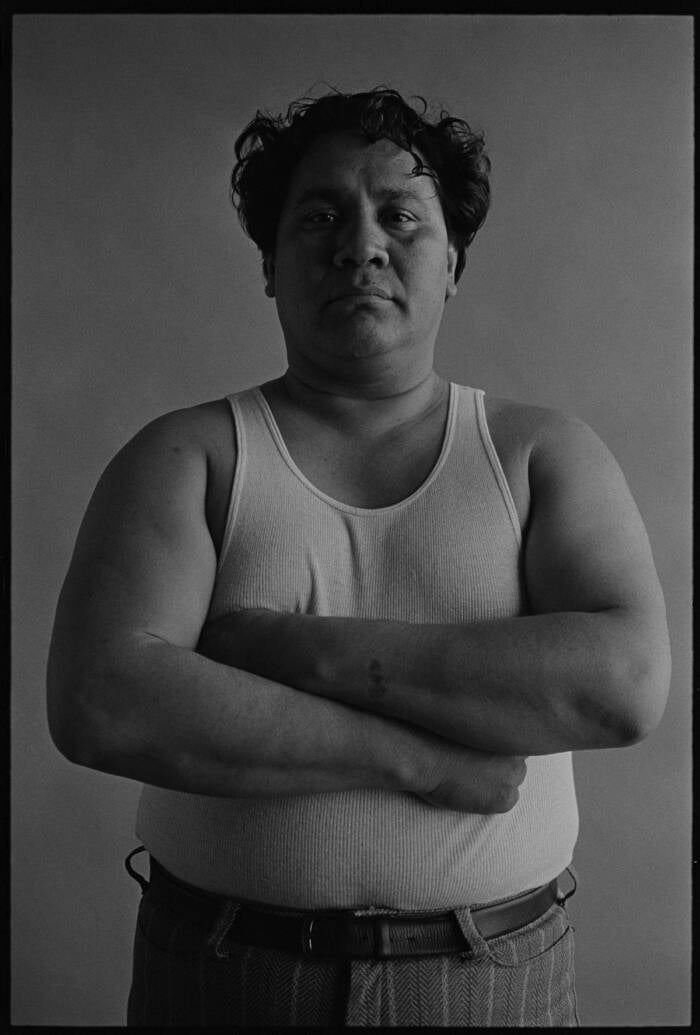
The Rise and Fall of the Brown Buffalo/FacebookAttorney, activist, and writer Oscar Zeta Acosta in a photo taken by Annie Leibovitz.
Hunter S. Thompson’s famous 1971 book Fear and Loathing in Las Vegas is not entirely a true story, but it certainly drew inspiration from real people and events. The book is a fictionalized account of his own reporting, a half-memoir, half-novel about a drug-fueled trip to Las Vegas.
The book’s main character Raoul Duke is effectively a stand-in for Thompson himself, but his traveling companion Dr. Gonzo was also based on a real person, Thompson’s friend Oscar Zeta Acosta. Acosta was an activist and lawyer who would later publish his own semi-autobiographical books, The Autobiography of a Brown Buffalo and The Revolt of the Cockroach People.
Both novels are considered to be influential works of Chicano literature, and Acosta seemed poised to become a countercultural icon in his own right.
Then, one day in May 1974, he vanished in Mazatlán, Sinaloa, Mexico.
His last known contact was a phone call to his son, during which he mentioned boarding a boat “full of white snow.” While various theories about his fate have emerged, ranging from murder to a drug overdose to a mental breakdown, no one is sure exactly what happened to him. Thompson investigated Acosta’s disappearance and memorialized him in a twisted 1977 Rolling Stone article titled “The Banshee Screams for Buffalo Meat,” but even he could not reach a definite conclusion about his friend’s final hours.
Oscar Zeta Acosta’s Time As An Activist Lawyer For The Chicano Movement
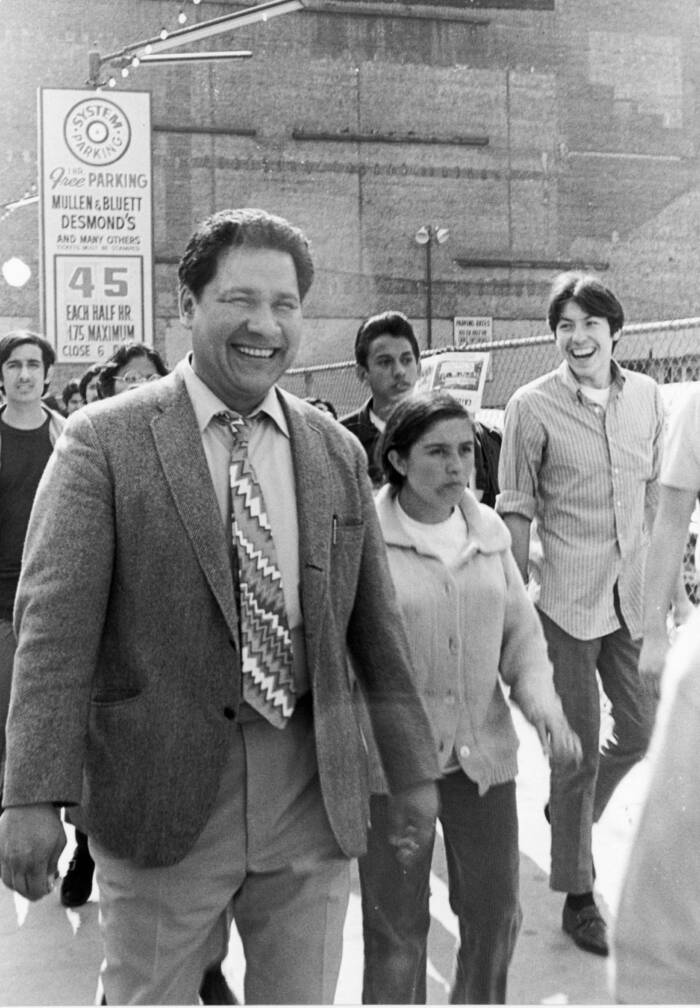
Oscar Castillo/The Rise and Fall of the Brown BuffaloOscar Zeta Acosta was an unconventional lawyer who frequently frustrated those with whom he worked.
Born on April 8, 1935, in El Paso, Texas, to Mexican American parents, Oscar Zeta Acosta later moved to California’s San Joaquin Valley with his family.
After high school, Acosta joined the U.S. Air Force, then pursued higher education following his discharge, becoming the first person in his family to go to college. He first attended San Francisco State University and then earned a law degree at San Francisco Law School. He also passed the California Bar exam in 1966. By this point, he had already started dabbling in drugs, and his usage would fatefully increase over time.
In 1968, Acosta moved to East Los Angeles and became deeply involved in the Chicano Movement. Eventually, in 1970, he ran for sheriff in Los Angeles County, promising to dismantle the city’s violent police department. He lost the election, but his run left a big impact on the Chicano community.
As Hunter S. Thompson explained in the foreword to The Autobiography of a Brown Buffalo, “Oscar managed to create an instant political base for himself in the vast Chicano barrio of East Los Angeles — where even the most conservative of the old-line ‘Mexican-Americans’ were suddenly calling themselves ‘Chicanos’ and getting their first taste of tear gas at ‘La Raza’ demonstrations…”
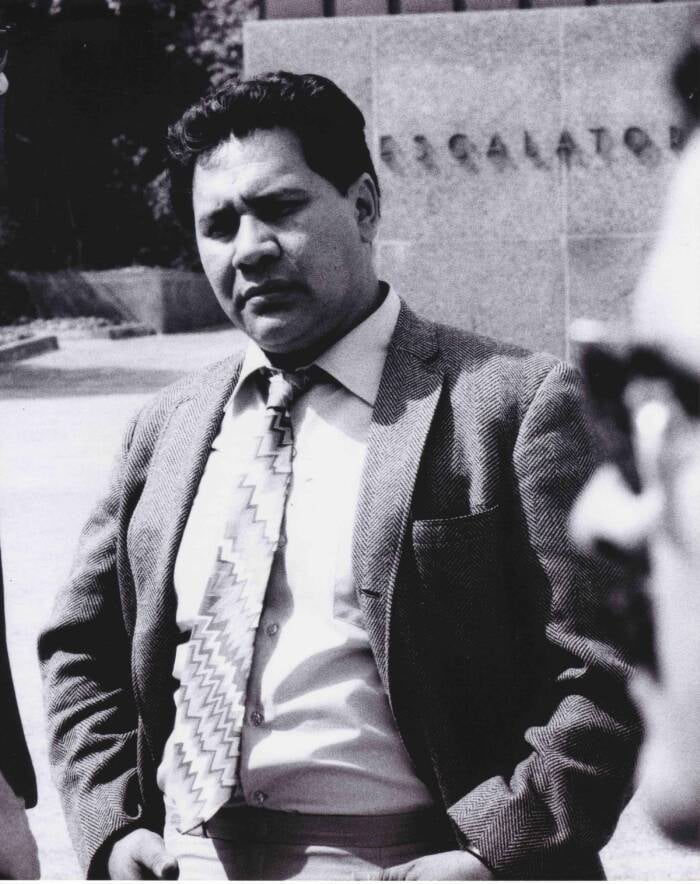
Raul Ruiz/The Rise and Fall of the Brown BuffaloOscar Zeta Acosta was passionate about helping impoverished Mexican American families.
While being sheriff wasn’t in the cards for Acosta, he did successfully argue and raise awareness of the court cases of numerous defendants associated with the Chicano Movement. He famously represented the “Chicano 13,” from the 1968 student walk-outs in East L.A. (who were protesting the educational inequality they faced). Acosta also represented members of the Brown Berets — and his legal work was itself a form of activism aimed at challenging systemic injustices faced by Mexican Americans.
At one point, Acosta subpoenaed every member of the Los Angeles County grand jury to prove an ongoing pattern of discrimination against Mexican Americans. Meanwhile, his behavior in the courtroom also raised eyebrows.
“[My father] would tell me about this Mexican guy, a lawyer, wearing a guayabera and insisting to the judge that it was appropriate for the courtroom,” filmmaker Phillip Rodriguez, who directed The Rise and Fall of the Brown Buffalo, a documentary about Acosta, told the Los Angeles Times.
Rodriguez added, “One time, he showed up in the courtroom barefoot. My father [also an attorney] probably had begrudging respect for him but also probably a little disgust. My parents were pursuing the politics of respectability, of middle class decency. Oscar eschewed that completely.”
Acosta’s time as a lawyer and activist would eventually help inspire his literary works. And it also led to a deep yet turbulent friendship with the famous gonzo journalist and author Hunter S. Thompson.
The Real “Dr. Gonzo” And A Chaotic Friendship With Hunter S. Thompson
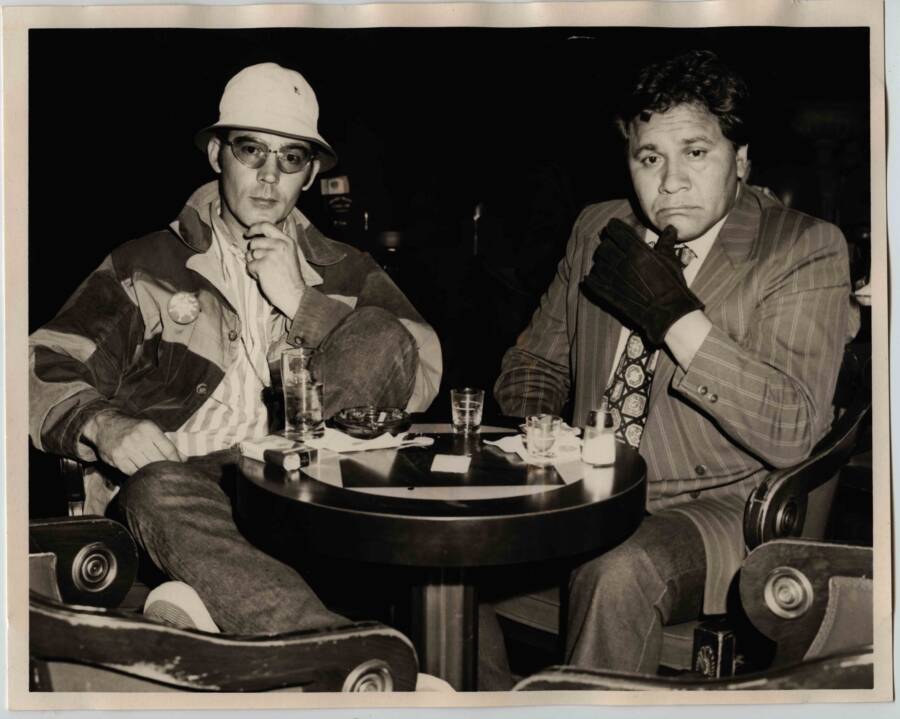
The Rise and Fall of the Brown BuffaloHunter S. Thompson and Oscar Zeta Acosta, pictured in Las Vegas.
Oscar Zeta Acosta and Hunter S. Thompson met sometime in the late 1960s, likely around 1967. Eventually, Thompson used Acosta as a source for his 1971 Rolling Stone article “Strange Rumblings in Aztlán,” which investigated the death of Mexican American journalist Ruben Salazar and also looked into the racism of the Los Angeles Police Department. But it’s clear from the relationship that developed and how Thompson wrote about Acosta that there was more than just a recognition of familiarity between the two men.
“Yeah, that’s him, folks — my boy, my brother, my partner in too many crimes,” Thompson wrote. “Oscar Zeta Acosta. Stand back. He is gone now, but even his memory stirs up winds that will blow heavy cars off the road. He was a monster, a true child of the century — faster than Bo Jackson and crazier than Neal Cassady… When the Brown Buffalo disappeared, we all lost one of those high notes that we will never hear again.”
Thompson and Acosta were kindred spirits, and their most famous adventure came in 1971, when they took two trips to Las Vegas. The first trip was under the pretense of covering a desert off-road race for Sports Illustrated — though the gig quickly spiraled into a drug-fueled bit of mania.
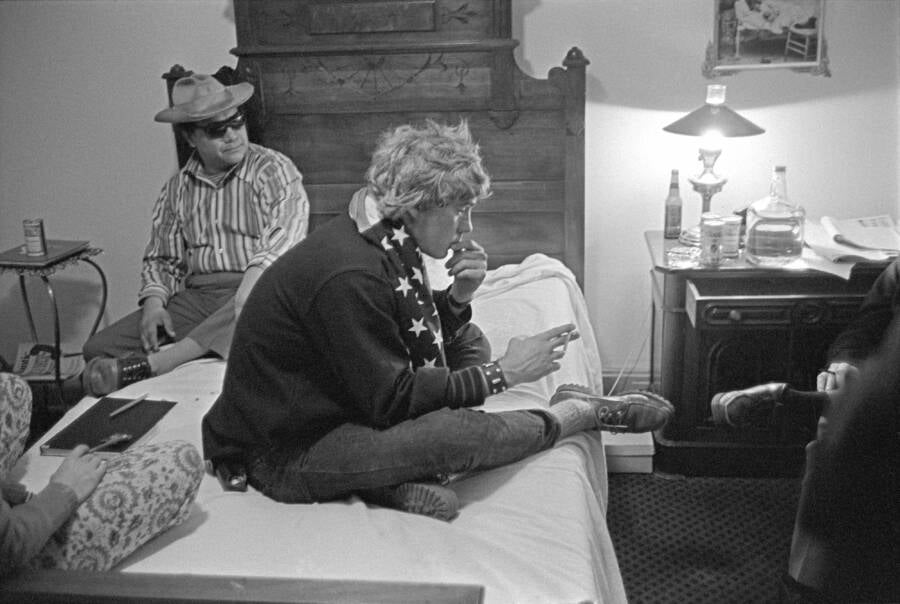
Bob Krueger/The Rise and Fall of the Brown BuffaloAcosta and Thompson, pictured during their travels.
Their second trip was to attend a narcotics conference, which they used as a backdrop to explore the decline of the American Dream. Both of these trips eventually became the basis for Fear and Loathing in Las Vegas, with Acosta fictionalized as the “300-pound Samoan lawyer” Dr. Gonzo.
The story was originally published in Rolling Stone in November 1971 before being published in book form in 1972. Between the publications, Random House sent a copy to Acosta, knowing he inspired the character Dr. Gonzo. Random House’s lawyers were worried that Acosta was going to sue because of Dr. Gonzo’s illegal drug use and other crimes in the book.
But interestingly, Acosta was actually angry that Dr. Gonzo was described as a “300-pound Samoan” — erasing Acosta’s Chicano identity. And that wasn’t all: Acosta also reportedly felt “ripped off” by the book because he thought that Thompson’s gonzo voice had been heavily inspired by Acosta’s own antics. Acosta even complained to one editor, “My God! Hunter has stolen my soul! He has taken my best lines and has used me.”
Acosta eventually agreed not to sue if a photo of himself and Thompson in Las Vegas appeared on the back cover of Fear and Loathing in Las Vegas — and if he received a two-book publishing deal of his own.
Thompson later defended his creative decisions: “My only reason for describing him in the book as a 300-pound Samoan instead of a 250-pound Chicano lawyer was to protect him from the wrath of the L.A. cops and the whole California legal establishment he was constantly at war with.”
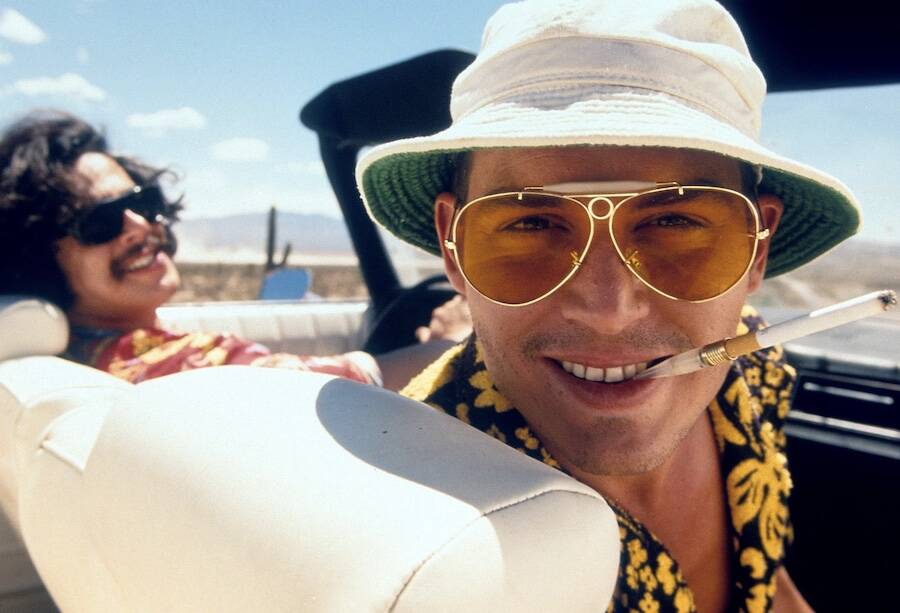
Universal PicturesJohnny Depp and Benicio Del Toro in the 1998 movie version of Fear and Loathing in Las Vegas.
Acosta’s frustration never fully went away, though.
That frustration was what inspired Acosta to write his own recollection of the events, which became part of The Autobiography of a Brown Buffalo. He also wrote The Revolt of the Cockroach People. Both of these books were, in a way, Acosta reclaiming his identity and narrative — even as both works highlight how Acosta struggled with his Chicano heritage.
“I have no practical ego,” Acosta wrote. “I am not ambitious. I merely want to do what is right. Once in every century there comes a man who is chosen to speak for his people. Moses, Mao, and Martin [Luther King Jr.] are examples. Who’s to say that I am not such a man?”
Unfortunately, just as Acosta was grappling with this sense of identity and self-discovery, he mysteriously disappeared in Mexico.
The Sudden Disappearance Of Oscar Zeta Acosta
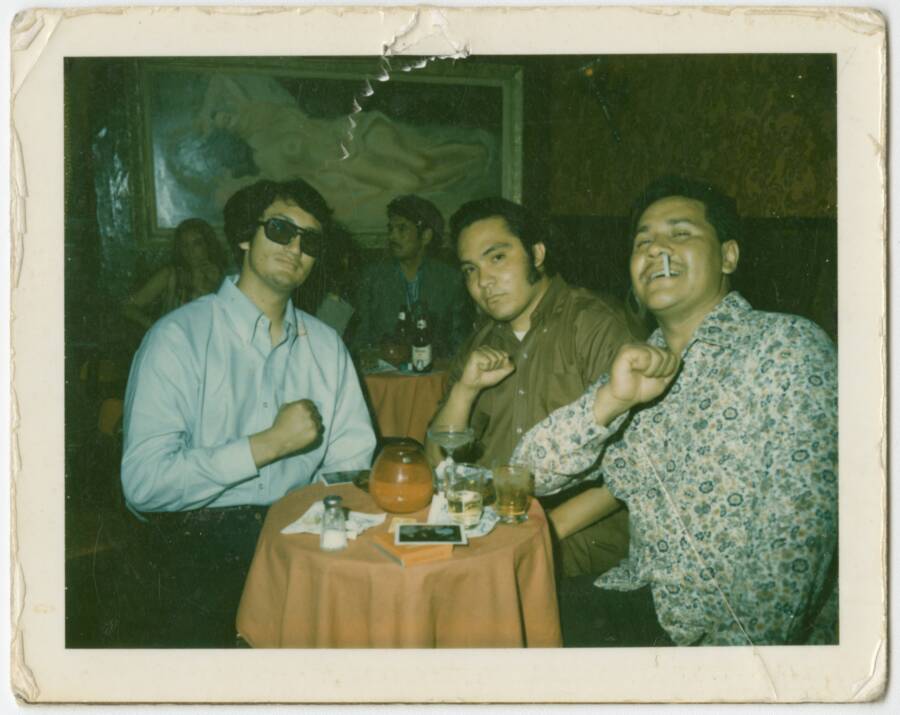
The California Ethnic and Multicultural Archives (CEMA), UC Santa Barbara LibraryOscar Zeta Acosta (right) with friends in the 1960s.
In May 1974, while traveling in Mazatlán, Sinaloa, Mexico, Oscar Zeta Acosta vanished. To this day, it’s still unclear what exactly happened.
His son thought he might’ve been murdered while trying to smuggle drugs back into the U.S.: “The body was never found, but we surmise that probably, knowing the people he was involved with, he ended up mouthing off, getting into a fight, and getting killed.” However, some of his other family members believed that he was “disappeared” due to his political activism.
Since Acosta was believed to be on an ill-fated drug run when he vanished, some have suggested that he fatally overdosed or even suffered a nervous breakdown, leading him to decide that he would never return to the U.S.
No one can say for sure.
The sudden disappearance did, however, prompt his old friend Hunter S. Thompson to go digging around. That investigation eventually became a 1977 article for Rolling Stone, and is now available in a collection of Thompson’s writing titled Fear and Loathing at Rolling Stone. The article, “The Banshee Screams for Buffalo Meat,” is uniquely Thompson, part obituary, part investigation, and part diatribe of a long-gone friend who, like Thompson, was a somewhat divisive personality throughout his life.
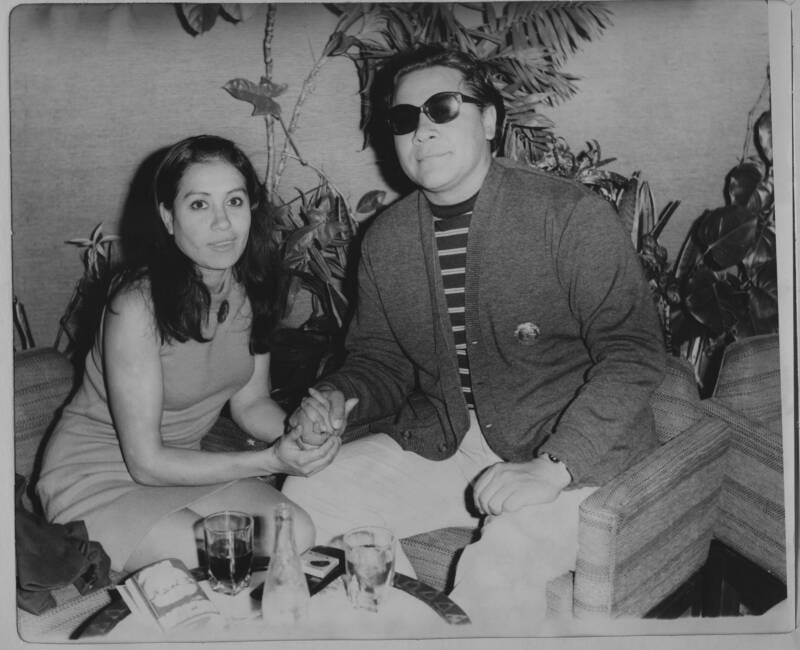
The Rise and Fall of the Brown BuffaloOscar Zeta Acosta with his wife Socorro.
Though Thompson never figured out exactly what happened to Acosta after he vanished, he theorized that Acosta had either been murdered by drug dealers or targeted in a politically motivated assassination.
Today, decades later, Oscar Zeta Acosta’s ultimate fate is unknown. In the 2017 documentary, The Rise and Fall of the Brown Buffalo, Phillip Rodriguez hoped to honor Acosta’s legacy, as complicated as it may be.
“He shows us you don’t have to be perfect to dissent,” Rodriguez said. “You can have human desires. You can be flawed. You can be fat. You can be funny. You can be drunk. You can be randy and still be effective.”
While Thompson was often far blunter — and in some cases offensive — when memorializing his old friend, it’s clear that things were never the same after he was gone. “Oscar was a wild boy,” he said. “He stomped on any terra he wandered into, and many people feared him… his birthday is not noted in any calendar, and his death was barely noticed… But the hole that he left was a big one, and nobody even tried to sew it up.”
After reading about the wild life of Oscar Zeta Acosta, learn about the trippy story of Albert Hofmann and the accidental invention of LSD. Then, go inside more mysterious unsolved disappearances.





